When designing signage for your business, it’s important to consider their ADA compliance. The Americans with Disabilities Act (ADA) ensures that individuals with disabilities have equal access to public spaces and private institutions.
ADA-compliant signs play a crucial role in guaranteeing accessibility and enhancing inclusivity. Given the universal standards that are required for this type of signage, businesses often need help with ensuring compliance; adherence to ADA guidelines is not just a matter of legal compliance but also a testament to your business’s culture and customer experience.
At The Carolina Signsmith, we’ve witnessed the challenges that businesses face firsthand in achieving ADA compliance with their signs. In this blog, we will provide valuable insights on how to avoid common mistakes or errors with this kind of sign solution.
Inadequate Placement and Height
ADA guidelines stipulate precise requirements for the placement and height of signage to ensure universal visibility and accessibility for all individuals. Placing signage too high or too low can make it challenging for people, particularly those with visual impairments or mobility aids, to read and interact with the displayed information. Proper positioning is key to effective communication and standardized compliance.
Neglecting Braille and Raised Characters
One of the most common ADA mistakes is failing to include raised characters on all signage. Braille, a form of tactile character, is essential for helping visually impaired individuals navigate your business and access critical information. To ensure ADA compliance for signage, make sure that all raised characters are:
- Uppercase and sans serif
- Between 5/8″ and 2″ in height and raised at least 1/32″ from the sign
- At least 3/8″ separated from raised text or other raised features
- Rounded or domed, not flat
Ignoring Finish and Contrast
Businesses should make sure not to overlook the finish and contrast of their signage. Proper contrast and finish are crucial for legibility when it comes to ADA-conforming signs. Consider the following during your design process:
- Characters should contrast with the background (e.g., pale characters with a dark background or dark characters with a pale background).
- Both characters and the background should have a matte finish to prevent glare.
Lack of Contrast and Tactile Elements
The failure to incorporate sufficient contrast between the background and text colors can hinder the readability of your signage for individuals with low vision or color blindness. Additionally, tactile elements, such as raised characters and symbols, are essential for tactile reading. Ensure your signage meets these requirements to enhance accessibility. Incorrect Mounting Height
Mounting surfaces play a crucial role in the installation of ADA signage. It’s essential to ensure that mounting hardware does not protrude, and that signage is securely fastened to prevent
hazards or barriers to individuals with mobility impairments. Improper mounting height is also a common mistake when installing ADA-compliant signage. To ensure accessibility, follow these guidelines:
- Signs with raised characters and braille should be mounted on the latch side of a door.
- There should be at least 48 inches between the ground and the lowest character and 60 inches between the ground and the highest character.
Ignoring Pictogram Guidelines
Pictograms are universal symbols used to convey information visually, making them invaluable for individuals with diverse linguistic backgrounds or cognitive disabilities. However, improper design or placement of pictograms can confuse rather than clarify. Adhere to ADA guidelines for pictogram design and ensure they complement the textual information effectively.
Inadequate Signage and Wayfinding
Insufficient signage or wayfinding support can negatively impact the accessibility of individuals with sensory and mobility disabilities. Avoid these mistakes by considering the following signage tips:
- Use legible fonts that are easy to read, like sans serif fonts
- Place signage at an appropriate height for easy visibility
- Provide Braille or tactile signage where needed
Lack of Employee Training Inadequate training of employees is a common mistake that can hinder inclusivity in the workplace. Ensure that your employees are aware of ADA requirements and practices, know how to interact with individuals with disabilities, and understand how to provide accommodation and assistance when requested. Even with meticulously crafted ADA-compliant signage in place, staff members must understand its significance and be able to assist patrons effectively. Providing training on ADA requirements and the importance of accessibility ensures that your team can support any patron who enters your business.
Failure to Update Signage
As businesses evolve and spaces undergo renovations or changes, signage must be updated accordingly to maintain compliance. Neglecting to update signage in a timely manner can result in non-compliance and create confusion for patrons. Regularly assess and update signage to reflect any changes in your business environment.
Ignoring Signage Requirements for Temporary Spaces
Businesses operating in temporary or transitional spaces may mistakenly believe that their signage is exempt from the observance of ADA standards. However, ADA compliance applies to all public accommodations, regardless of the permanence of the space. Temporary signage solutions should still adhere to ADA guidelines to ensure accessibility for all patrons.
Inconsistencies Across Signage
Maintaining consistency in design elements, font styles, and messaging across all signage within your establishment is crucial for clarity and comprehension. Inconsistencies can lead to confusion and detract from the overall accessibility of your signage system. Establishing a cohesive visual identity that aligns with ADA guidelines enhances user experience and accessibility. Importance of Compliance
Implementing ADA-compliant signs may seem straightforward, but businesses often encounter various challenges along the way. ADA signage serves as an essential navigational tool for individuals with disabilities, ensuring they can access and navigate spaces with ease. By avoiding the common mistakes we’ve outlined, your business will have taken one step closer to creating an environment that is welcoming and inclusive to all individuals.
Enhance accessibility with ADA-compliant signage. Contact The Carolina Signsmith today for assistance and expert guidance with this type of signage; we specialize in tailoring each sign solution to your unique business needs and brand requirement.
Foster a business environment that promotes inclusivity today!







